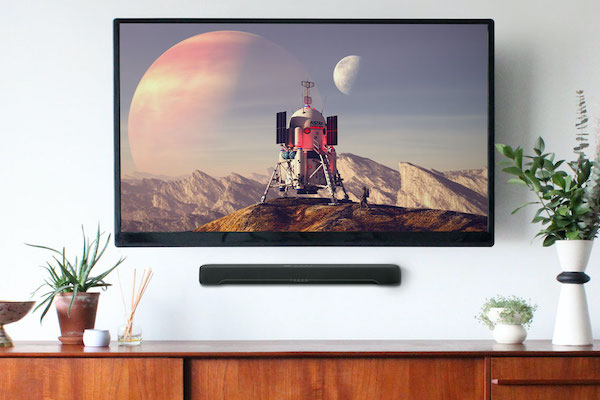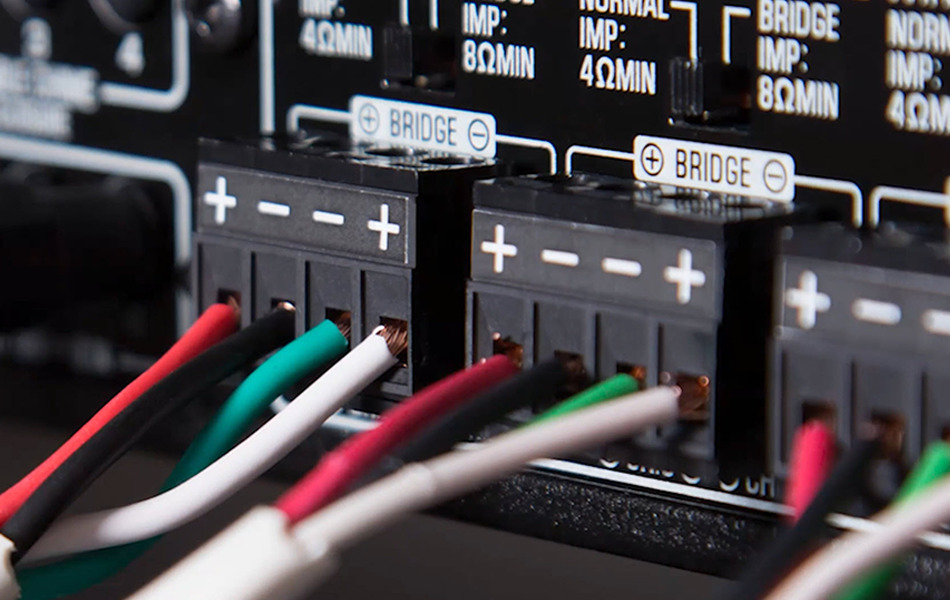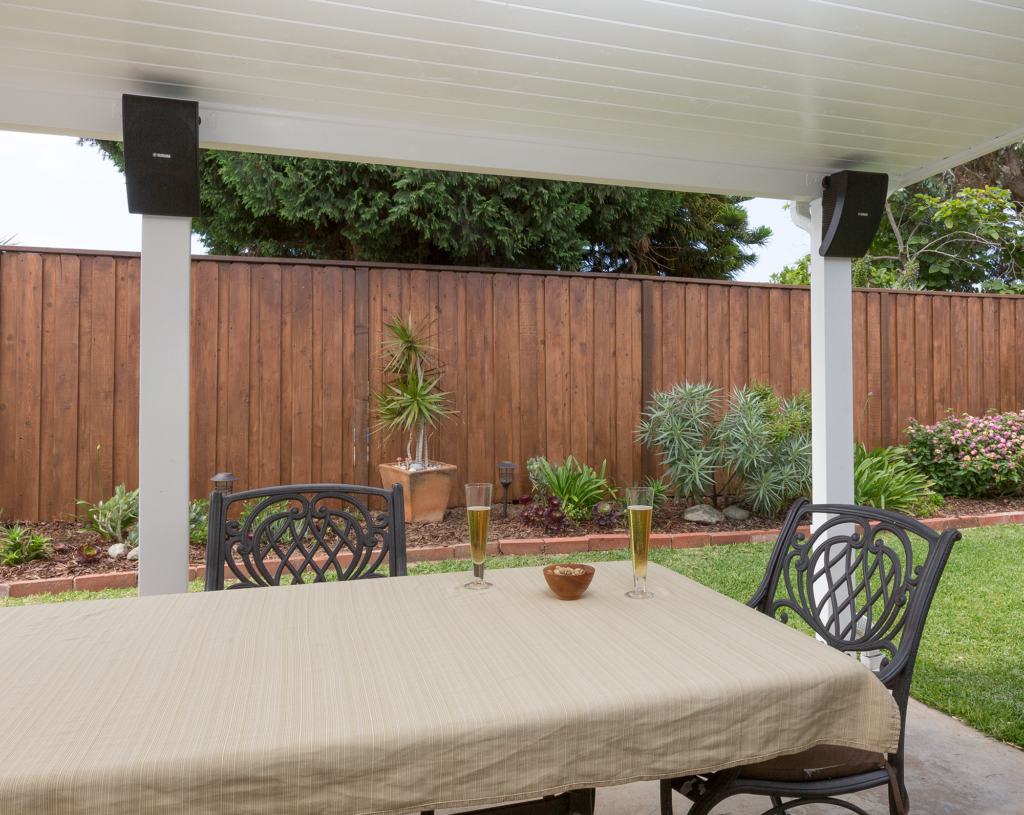How to Calibrate Your AV Receiver with YPAO™
Excuse us while we nerd out about things like R.S.C. and Multipoint Measurement.
Now that you have your new sound system and have connected all your components and speakers, it’s time to enjoy your investment. But not quite yet. There’s one more important thing to do — calibration!
Fine-tuning (that is, calibrating) your system to your unique listening environment can transform a good system into something magical. Calibration ensures that all your speakers are reproducing the sound at the proper level, arriving at your ears at the right time with the perfect balance of highs and lows as intended by the artist.
Fortunately, Yamaha has taken this seemingly daunting task and made it simple with something called Yamaha Parametric room Acoustic Optimizer, or YPAO for short.
YPAO Levels
There are several different levels of YPAO available, depending upon on the particular model of receiver. They are:
1. Basic YPAO auto calibration, available on all current Yamaha AV receivers. It starts out by testing that all your speakers are wired properly — that is, red wires are connected to red connectors and black to black. If something didn’t get connected correctly, the system will let you know. It then checks the frequency response of each speaker to determine if it is large or small. If the speaker is categorized as “small,” the deep bass notes intended for that speaker will be redirected to the subwoofer for reproduction, which helps prevent potentially damaging bass notes from reaching small speakers. YPAO also sets the right amount of delay to each speaker to ensure your ears are receiving all the sounds at the same exact time.
2. YPAO with R.S.C. (Reflective Sound Control). As explained in detail later in this article, this feature compensates for the boominess that occurs when speakers are placed too close to furniture or walls — something that’s very common in typical home theaters. YPAO with R.S.C. is available in the RX-V4A, RX-V6A and all AVENTAGE AV receivers.
3. YPAO with R.S.C. and multipoint measurement. In addition to Reflective Sound Control (see above), this feature takes multiple measurements around your listening area for a smoother and bigger sweet spot. (More information below.) It’s available in the RX-V6A and all AVENTAGE models.
4. YPAO R.S.C, multipoint and precision EQ is available in the RX-A4A and higher AVENTAGE receivers and builds on the previous versions. The addition of 64-bit resolution of the data calculations yields much more accurate correction data and provides the capability of measuring each speaker’s horizontal placement angle in relation to the listening position. This gives the internal signal processor information about where to place the decoded soundtrack in relation to your home theater’s unique speaker placement. The end result is that you hear sounds coming from the exact horizontal location where the mixing engineers placed them in the studio.
5. YPAO R.S.C. with 3D, multipoint and Precision EQ. The 3D aspect is reserved for the highest level of AVENTAGE AV receivers (RX-A4A and higher) due to the massive processing resources needed for this advanced feature. Using a quad-point measurement technique, this level of YPAO can determine what angle and distance each overhead (or Dolby Atmos®-enabled) speaker is from the listening position. This allows for accurate 3D sound element placement in your room so that the sounds of helicopters flying overhead, for example, will come from the exact overhead position the mixing engineers placed them during the soundtrack production.
Whichever level of YPAO your model offers, it’s easy to use: just plug the supplied YPAO microphone into the connection on the front panel of your AV receiver, and follow the instructions on the on-screen display.

In this article, we’ll focus on two YPAO features available in Yamaha RX-V6A and higher models: Reflected Sound Control (R.S.C. for short) and Multipoint Measurement. Both allow you to dial-in your speakers to the next level of performance for your particular room.
Reflected Sound Control (R.S.C.)two
In home theaters, there are often objects (for example, furniture and walls) that are close to speaker locations. These objects can reflect some of the sound coming out of that speaker, which can cause undesirable interactions since reflected sound has to travel a little further than the direct sound, so it will arrive at your ears a split-second later, as shown in the illustration below. This phenomenon is most pronounced in the lower registers of the audio spectrum — that is, in bass notes and the lower range of the human voice — and is usually described as a “boomy,” “muddy” or “muffled” sound. However you describe it, it’s never good!
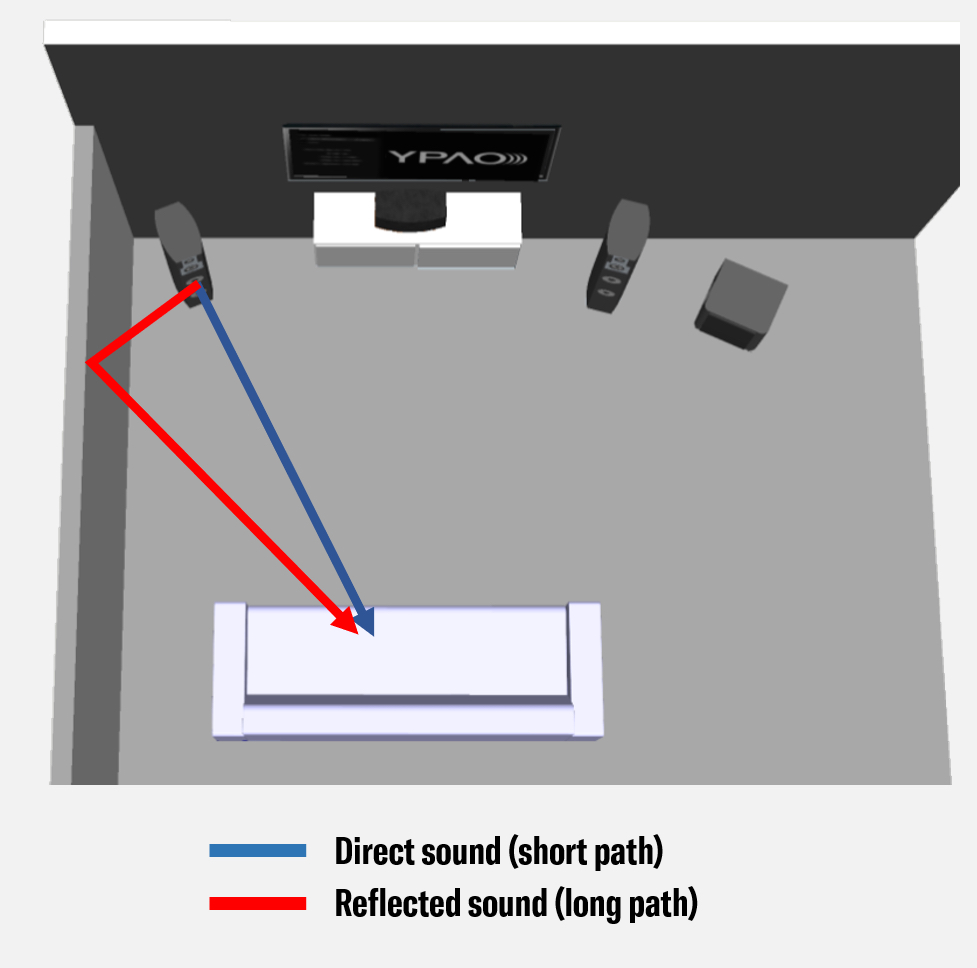
The R.S.C. algorithm in the YPAO system “listens” for these reflections as part of its calibration process and applies a corrective equalization separately to any speaker that needs compensation due to reflective surfaces on nearby objects. This correction produces a much clearer and more dynamic presentation of your favorite audio content, over the full frequency range.
Multipoint Measurement
YPAO Multipoint Measurement adds the capability of taking measurements at up to eight different locations in your seating area, sending that information to the YPAO processor about the acoustics of these additional locations, not just your prime seating position.
Physics makes it impossible for every location in your room to be calibrated perfectly, but that’s not the goal. In all likelihood, you won’t be watching your favorite movie or TV show (or listening to your favorite recording) while leaning up against a wall somewhere in the room — you’ll probably be sitting in the prime listening location (the “sweet spot”) in front of the TV or receiver and somewhere close to equidistant from the main front speakers. By including additional information in the calibration calculation, Multipoint Measurement makes the sweet spot bigger so that music and movies are more enjoyable for the rest of the family seated in the general area.
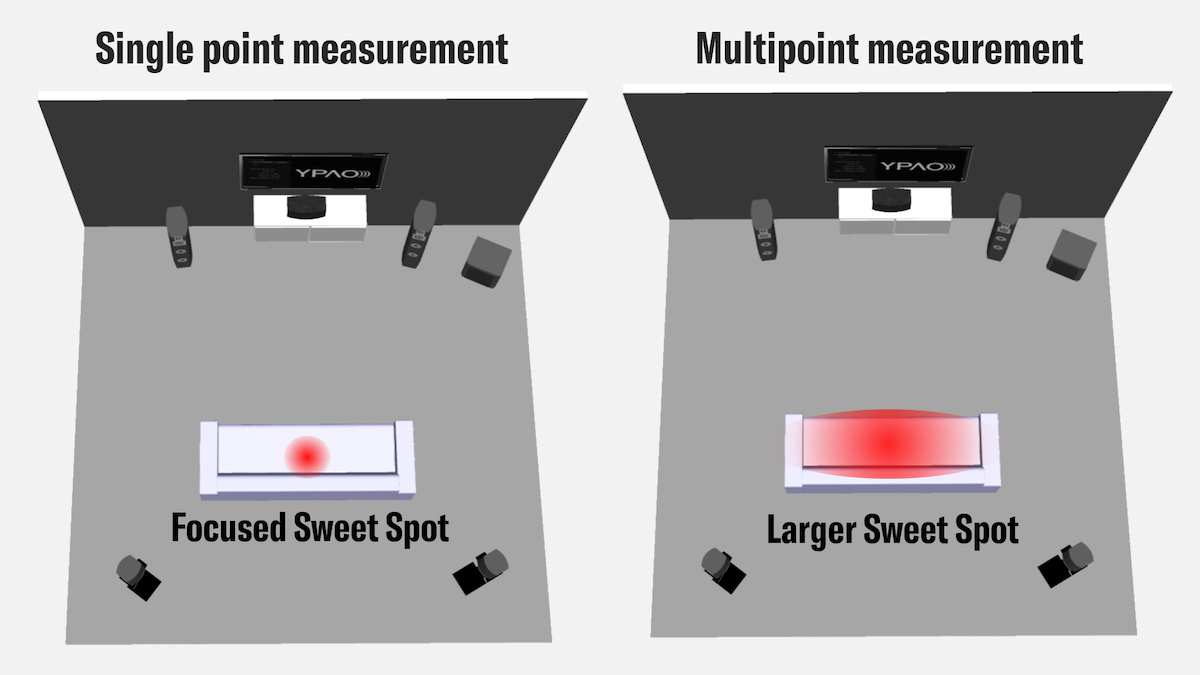
Multipoint Measurement Best Practices
When you plug the supplied YPAO microphone into the YPAO input on your receiver, the onscreen display will give you the option of performing a Single or Multiple measurement calibration. Press the left or right arrow buttons on the remote control until Multiple appears on the screen, then press enter to start the calibration. The onscreen display will guide you through the rest of the process:
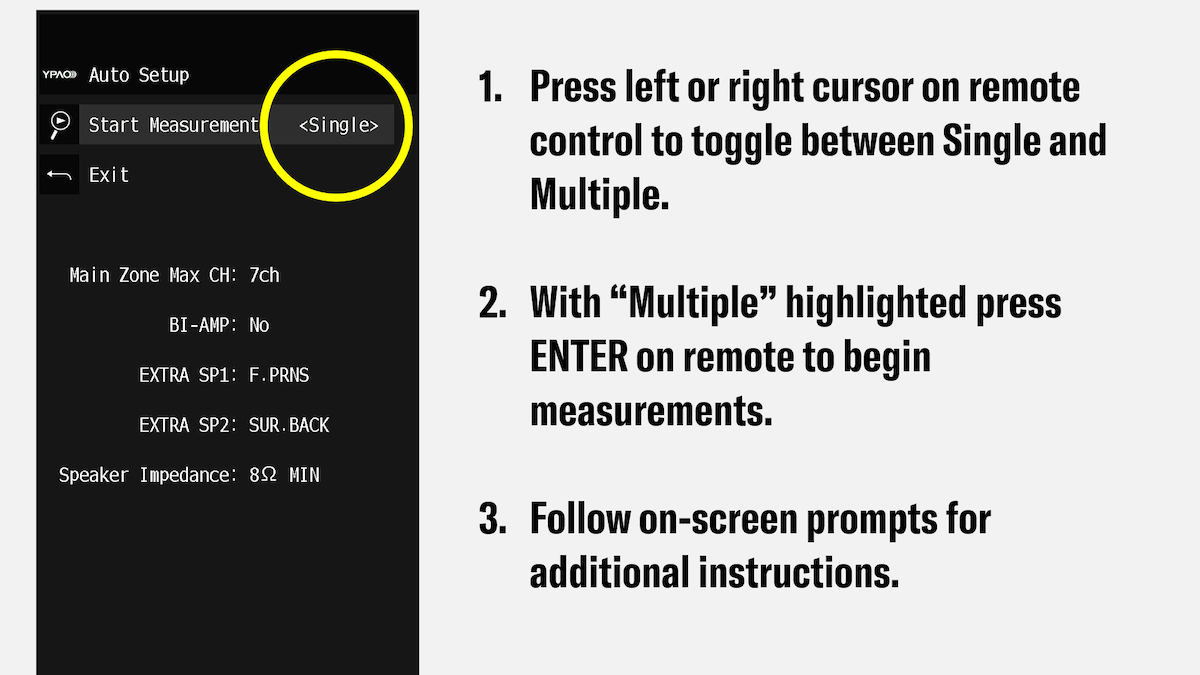
Always make the first measurement from your prime (“number one”) listening position. Make the rest of the multipoint measurements from locations 2 to 3 feet away from the number one position — not necessarily from every seat. It doesn’t matter what order or pattern you use for the additional measurements. YPAO is just collecting more data around the prime listening spot to get a better idea of how your room is reacting to the sound from the speakers. The more positions you measure, the more data YPAO gets to work with, and the better calibration you get.
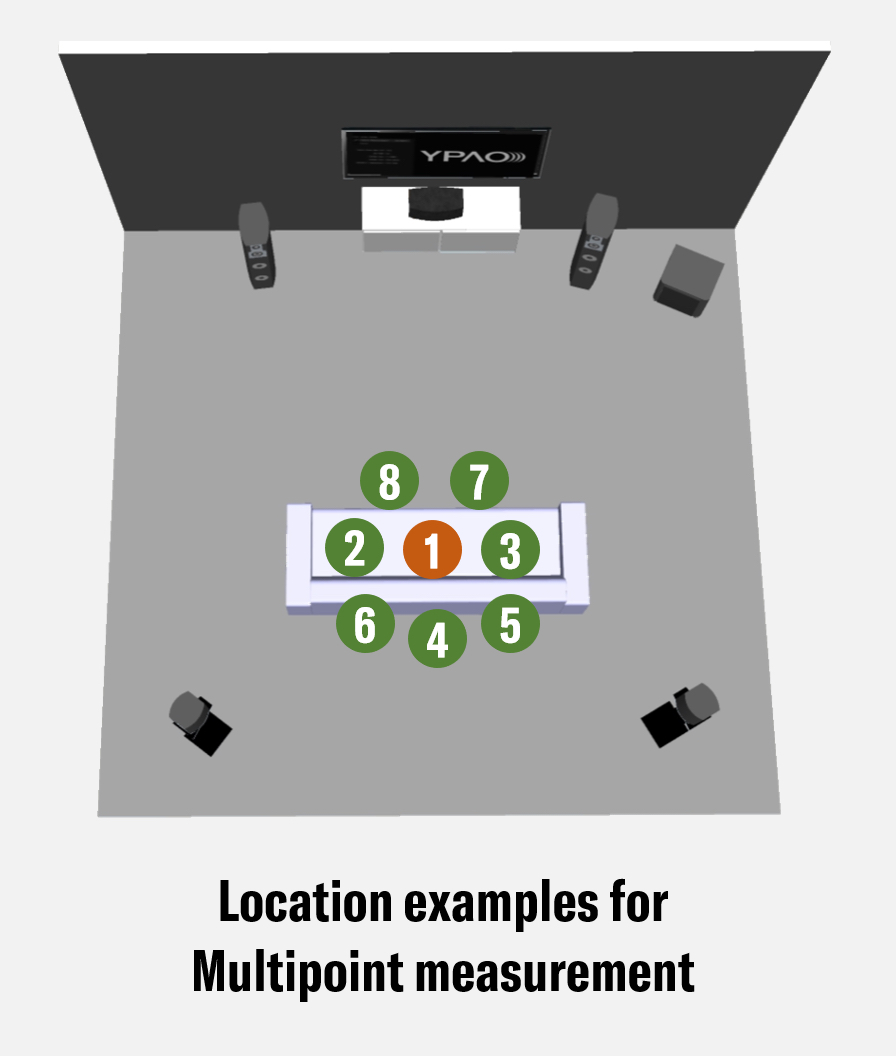
Remember, not every seat in the house can be perfect. The goal is to make a larger prime listening area so all seating positions are closer to that sweet spot. Multipoint measurement is a big improvement over single-point calibration systems, which only take measurements from the sweet spot.
Expectations of exciting and enveloping music and movie playback are probably the reasons you invested in an AV receiver in the first place. Take the extra ten or fifteen minutes to fine-tune it in your listening room with YPAO R.S.C. and Multipoint Measurement and you can rest assured your system is performing up to its absolute best capability.
Have a turntable and need suggestions for vinyl that will flex your system? Check out this posting.
Click here for more information about the Yamaha RX-V4A.
Click here for more information about the Yamaha RX-V6A.
Click here for more information about Yamaha AVENTAGE receivers.










